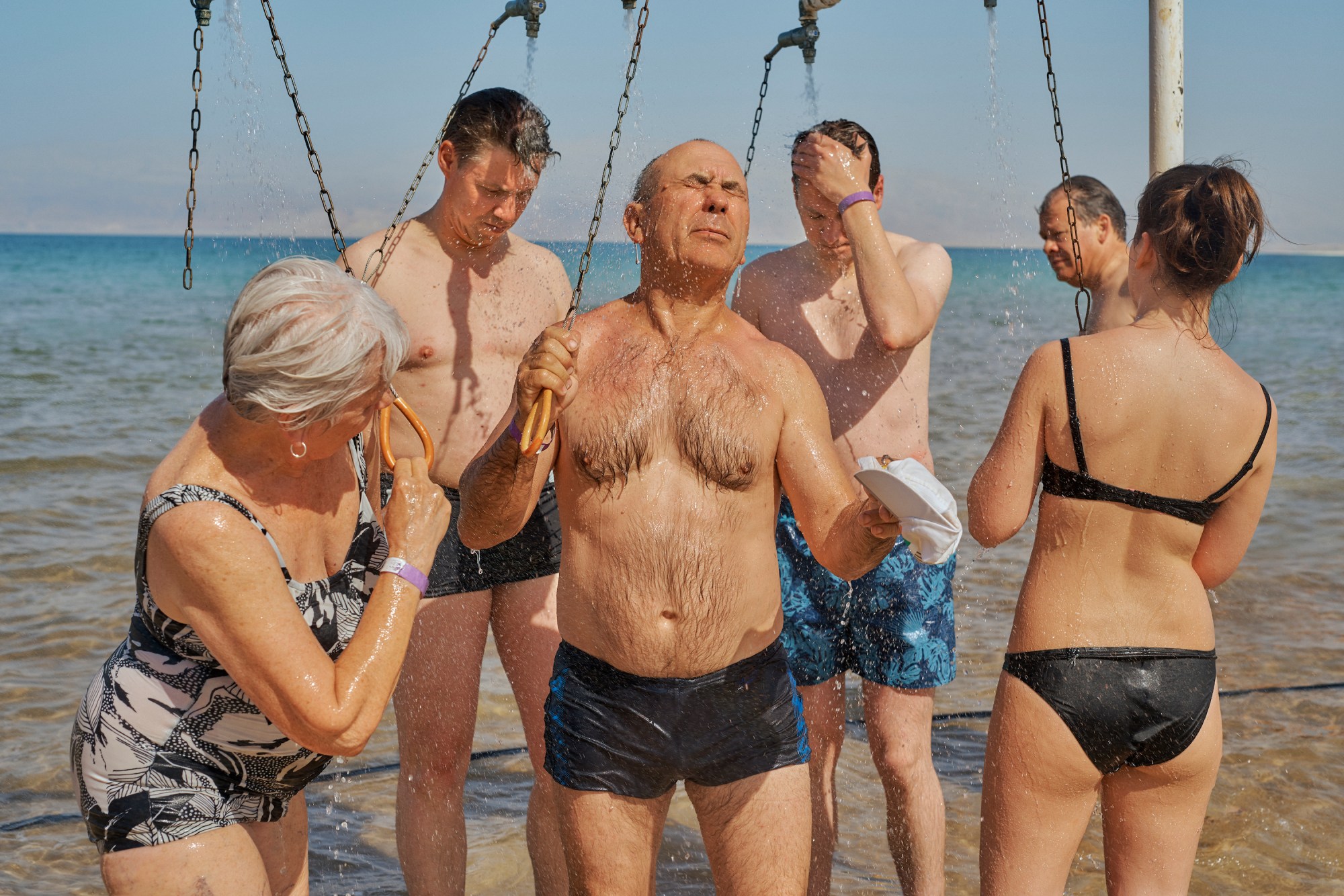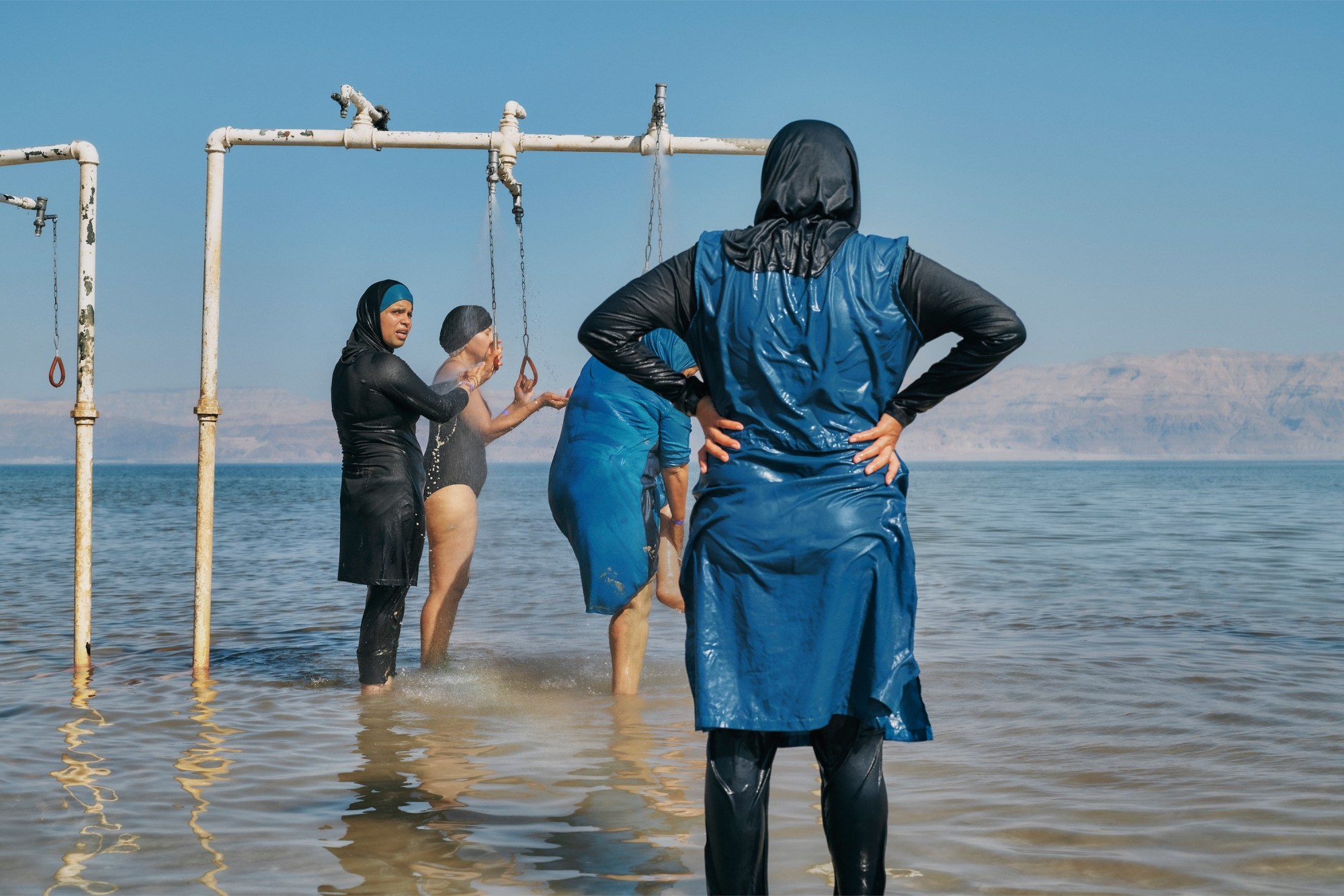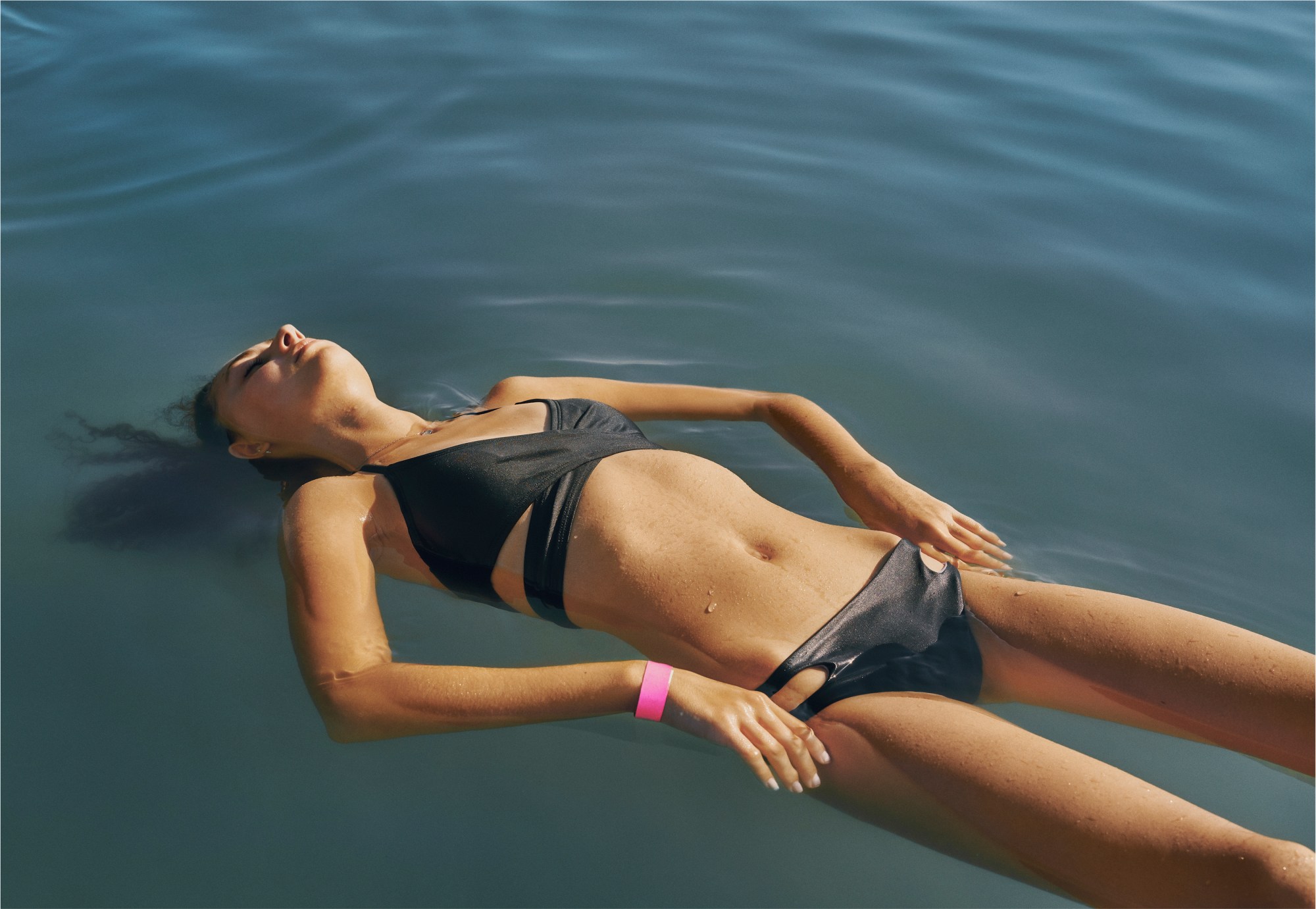In 2015, photographer Cait Oppermann traveled to Israel with her partner, Yael, to visit her family. And together, they took a trip to the Dead Sea. It wasn’t Yael’s first time — her family had emigrated to Israel from Morocco in the 40s, and she took trips when she lived there as a child — but it was Cait’s, and right away, there was a sense of otherworldliness about the place that captivated her. She still remembers the dryness of the air, the smell of sulfur from the muddy earth and the intense, unforgiving heat.
What struck Cait most, though, was not the atmosphere, or even the Dead Sea itself, so high in salinity that one has the ability to float on its surface. Instead, Cait’s eyes were drawn to the freshwater showers that lined the water’s edge, and the chaotic frenzy of people rushing to wash the stinging saltwater from their eyes. As she watched their movements, so primal and fluid, Cait was reminded of the light, flowing gesticulation of subjects in Renaissance paintings and Hellenistic sculptures. It was a sight that was notably contrasted with the heaviness and stillness of the water around them, and the one she felt most compelled to capture on camera.
Cait, now 31 and living in New York City, returned to the Dead Sea two more times over the next three years to photograph the people at the water’s edge for a larger body of work. In The Dead Sea (2015-2018), she has preserved the edge of the Sea as it will always be in her memory: not as a place of calm or stillness, but one full of life, and constantly in flux. Cait spoke to i-D about what it was like to capture these moments and why she waited until now to show her photographs to the world.
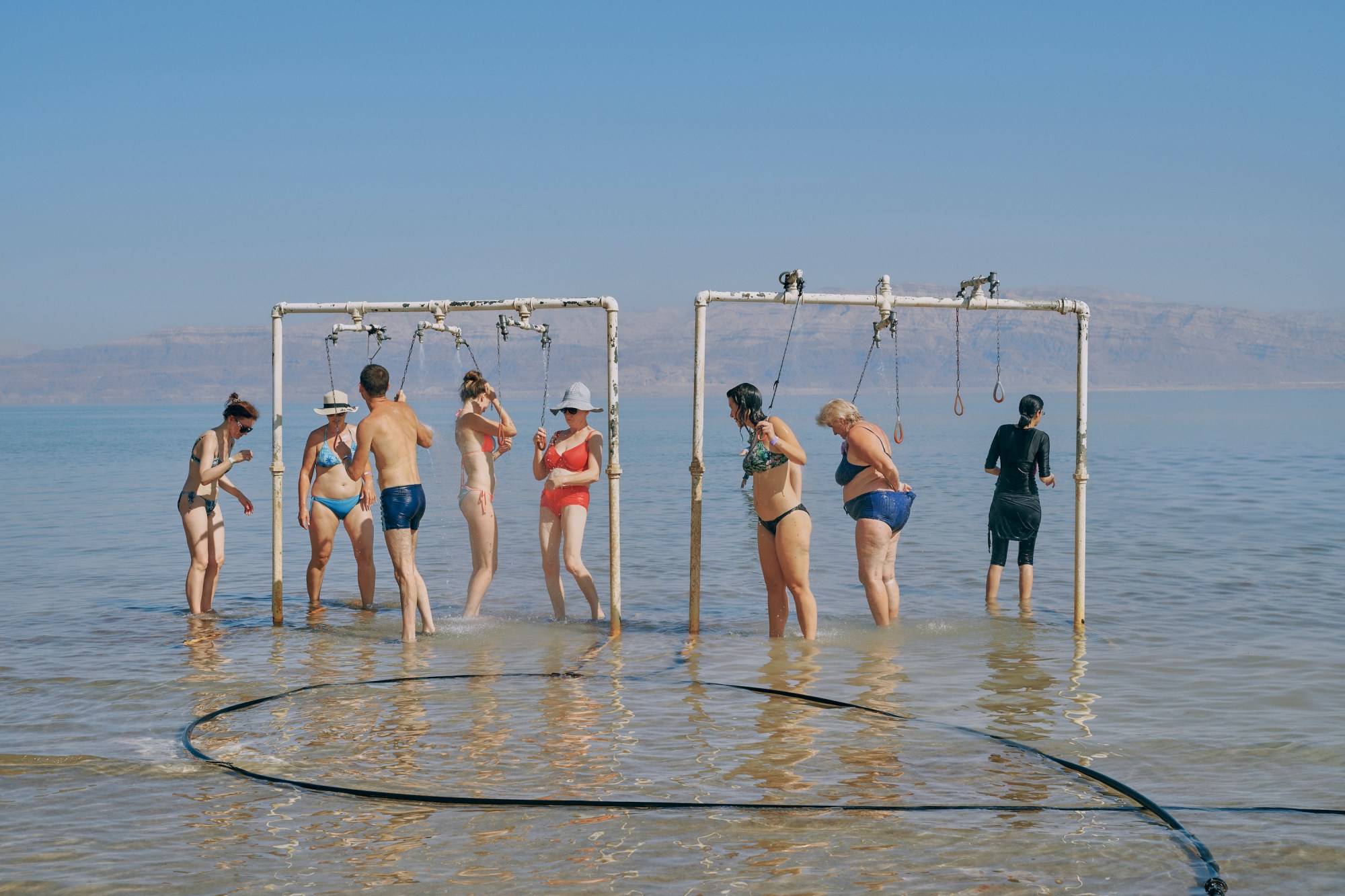
How many times did you visit the Dead Sea for this body of work?
I’ve visited the Dead Sea three times. The first was really an introduction, where I first fell in love. I actually only had my phone with me and started taking what would be sketches for the work. In 2016, I returned to properly shoot and stay there for several days. My most recent trip was in 2018 when I shot my final images of the project.
What about the atmosphere stood out to you?
The Dead Sea is a place that feels almost mystical to me. There’s a part of me that wanted to grab onto that and keep a piece of it through photographs. The part of the Sea I kept coming back to is rather rugged, which is what I liked about it. There are many resort hotels which have fake sand beaches and lounge chairs, but I preferred areas where the earth felt as unchanged as possible and the water’s edge was full of a mixture of smooth and jagged salt rock instead. It’s not a pretty place up close and not particularly glamorous, but if you look across the water to Jordan or back toward the mountains rising out of the desert and overlooking the Sea, it’s beautiful. And old. Somehow you can feel the ancientness when you’re there, looking across the water.
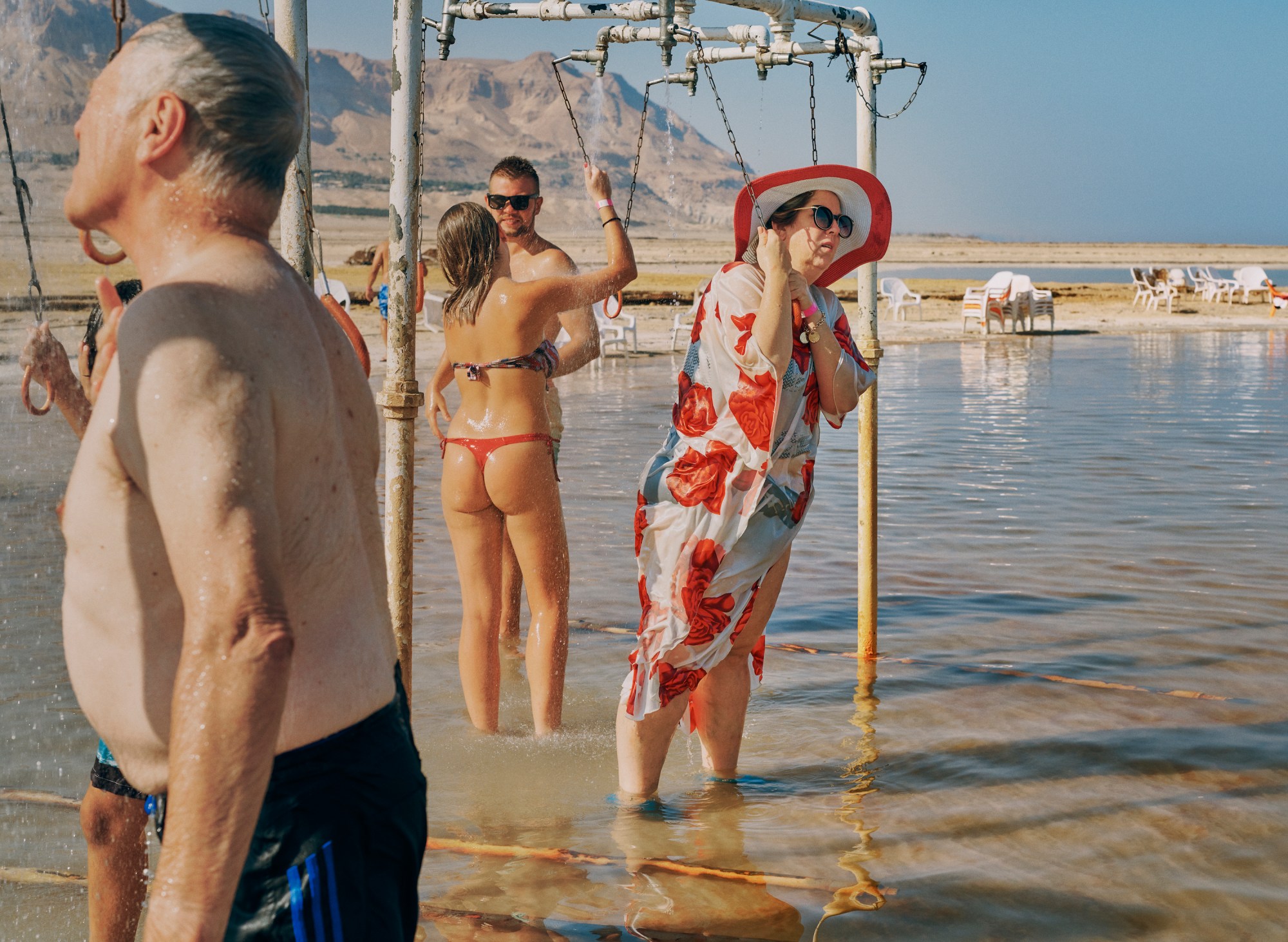
Why did you choose to focus on the showers?
The space around the showers is often occupied by people who are temporarily blinded from the water, which is almost ten times saltier than the ocean. It’s seeping into and burning their eyes as they find themselves stumbling desperately toward the freshwater showers for relief. Naturally, I found this space to be unique in that I could photograph these bathers with abandon, as they were unconcerned with me. Consequently, I saw, in the groupings of people under the water, fluid compositions like those of Renaissance painting, coupled with the oily viscosity of the water itself. In addition to the visitors, I became interested in the nature of the water’s edge as it constantly changes. This body of work speaks to the edge of the Sea and the temporality of what happens there.
Did you notice anything different about the Sea each time you went back?
Every year, the Dead Sea shrinks by at least a meter due to a number of factors, including relations with Israel’s neighboring countries, lack of attention and general mismanagement of the country’s water supply by the government. Even the decision by President Trump to move the American Embassy played a role in the future of the Dead Sea. In the few years I spent returning to this particular place, I could see the change — not gradual at all, but actually quite jarring.

Were there any challenges shooting the photographs?
It was mentally and physically taxing. Focusing on one subject in one space often makes it hard to figure out if you’re repeating yourself. It was also, of course, incredibly hot. The camera I shoot with is quite heavy, so I had to manage keeping it high enough that it wouldn’t get splashed with any of the saltwater or spray from the showers. I’d wade into the water as well, standing in it for hours, and this particular water tends to dehydrate you even faster due to the salt content. It was rather grueling at times and I have to say, I’ll likely skip a trip out there on my next visit to Israel (laughs).
This body of work has been five years in the making. Why did you decide to release it now?
I have a tendency to make work and then become unsure about what to do with it. It’s tough to put yourself into something and then feel like it’s done or it’s ready to be seen by someone other than yourself. I usually require a bit of a window in between finishing something and “letting go” of it and I suppose two years was long enough!


